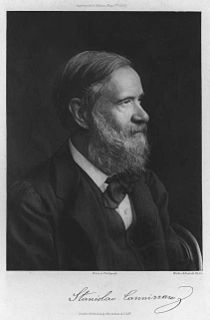William Cudmore McCullagh Lewis (29 June 1885 – 11 February 1956) was British Brunner Professor of Physical Chemistry at the University of Liverpool.

The University of Liverpool is a public university based in the city of Liverpool, England. Founded as a college in 1881, it gained its royal charter in 1903 with the ability to award degrees and is also known to be one of the six original 'red brick' civic universities. It comprises three faculties organised into 35 departments and schools. It is a founding member of the Russell Group, the N8 Group for research collaboration and the university management school is AACSB accredited.
He was born in Belfast, the son of linen merchant Edward Lewis and his wife Francis Welsh McCullagh. He was educated at Bangor Grammar School. Co. Down and the Royal University of Ireland, Belfast where he studied physics and chemistry. After gaining an MA degree in 1906 he was a Demonstrator for a year and then moved to England to do research in physical chemistry at the University of Liverpool. There he was awarded a scholarship to work at Heidelberg University for a year. [1]

Belfast is a city in the United Kingdom, the capital city of Northern Ireland, standing on the banks of the River Lagan on the east coast of Ireland. It is the largest city in Northern Ireland and second-largest on the island of Ireland. It had a population of 333,871 as of 2015.

Bangor Grammar School, is a Northern Irish voluntary grammar school for boys in Bangor, County Down. It was founded in 1856 by the Conservative politician, Col The Hon. Robert Ward PC MP(Ireland) and is one of eight Northern Irish schools represented on the Headmasters' and Headmistresses' Conference.

The Royal University of Ireland was founded in accordance with the University Education (Ireland) Act 1879 as an examining and degree-awarding university based on the model of the University of London. A Royal Charter was issued on 27 April 1880 and examinations were opened to candidates irrespective of attendance at college lectures. The first chancellor was the Irish chemist Robert Kane.
He was appointed Brunner Professor of Physical Chemistry in 1913 (until 1937, when it was merged with the Grant chair of Inorganic Chemistry). In 1918 he propounded his theory of chemical reaction which came to be called the "Collision Theory". A similar theory was also propounded by Max Trautz in Germany in 1916, unbeknown to Lewis because of the first World War. [1]
Max Trautz was a German chemist. He was very productive with over 190 scientific publications especially in the field of chemical kinetics. He was the first to investigate the activation energy of molecules by connecting Max Planck's new results concerning light with observations in chemistry.
In 1926 he was elected a Fellow of the Royal Society. His candidature citation described him thus :Distinguished for his researches in physical chemistry. Has carried out most valuable and important investigations on the energy relationship of chemical change and was one of the first to apply the energy quantum theory to chemical reaction. His pioneer work in this field has proved to be of great value and has opened up a very promising field of research. Author of: - 'A System of Physical Chemistry.' Has published a large number of original papers on many problems in physical chemistry in addition to a long series of papers on the radiation theory of reaction. [2]

Fellowship of the Royal Society is an award granted to individuals that the Royal Society of London judges to have made a 'substantial contribution to the improvement of natural knowledge, including mathematics, engineering science, and medical science'.
He was appointed the first Grant-Brunner Professor of Inorganic and Physical Chemistry in 1937, holding the position until 1948. [3]
He died in Malvern in 1956. He had married Jeannie Waterson Darrock, with whom he had one child, Ian, who became a physicist at Harwell Atomic Energy Research Establishment.







